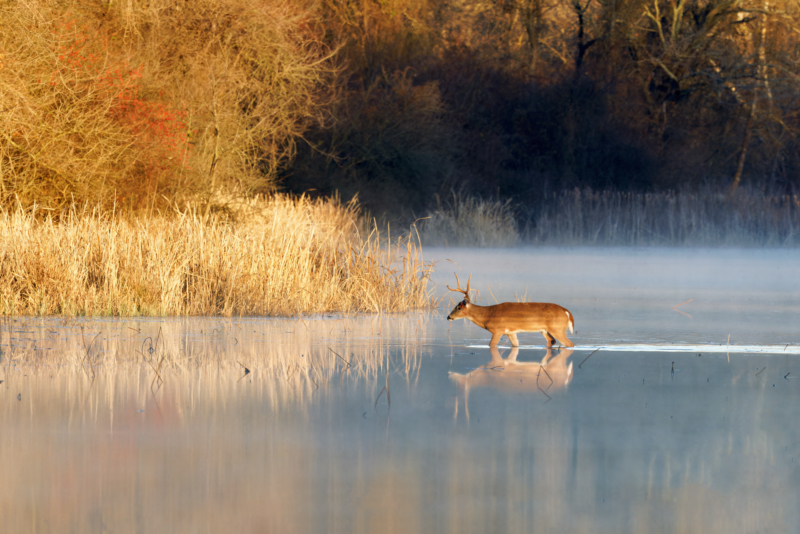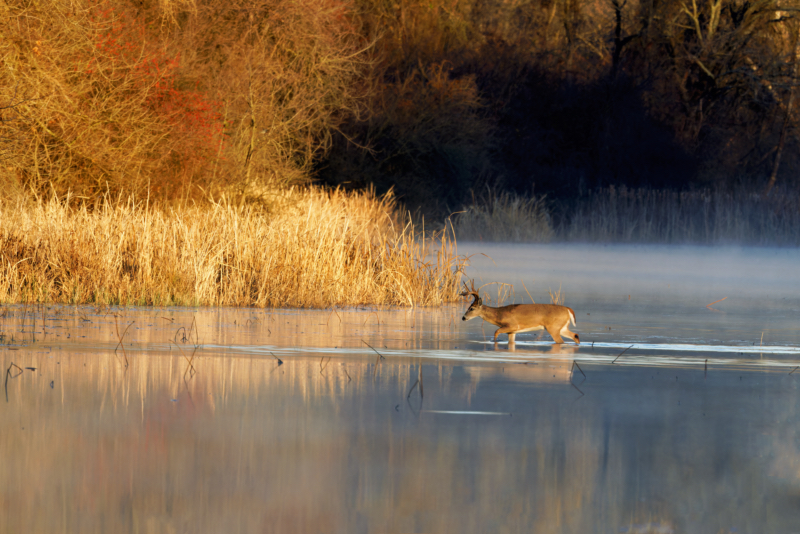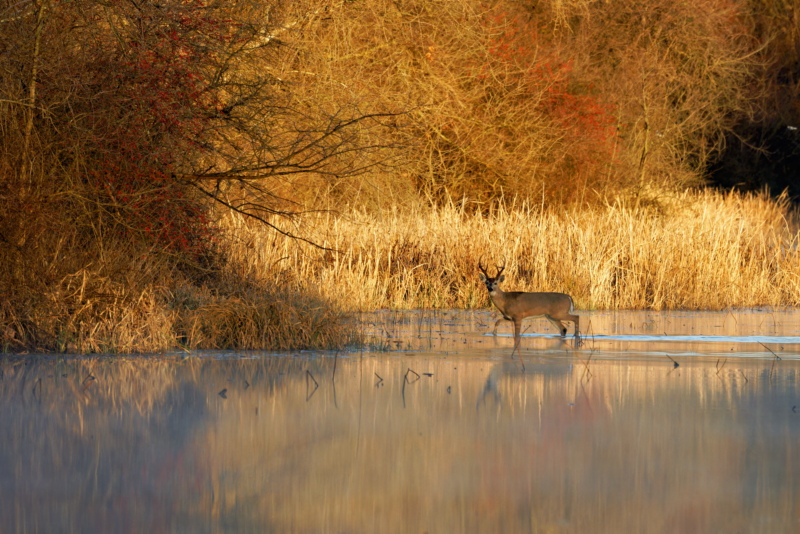Today’s photos are of two Whitetail Bucks crossing Reeves Slough, which is at the Sequoyah National Wildlife Refuge in Oklahoma. Each of these bucks went across the slough one at a time. I posted about one of these bucks yesterday in reference to it having shed an antler (Whitetail Antler Shedding: A Painless Process?).
I want to thank Bret Bricker, a photography friend, who took the time to pattern these bucks and to let me know when to get set up so that I could capture them crossing the slough. He had been seeing them cross a certain area at around 7:30 A.M. Sure enough on Feb. 14, 2024, at close to 7:30, these two bucks crossed and I was ready and able to get these photos.

Observing whitetail bucks and their behavior patterns can be a fascinating endeavor for any wildlife enthusiast or photographer. While they might not adhere strictly to a schedule like clockwork, they often exhibit certain behaviors and routines that can be predictable to some extent. Here are some insights into patterning whitetail bucks and their potential habits regarding crossing bodies of water:
Understanding Whitetail Buck Behavior
Whitetail bucks, like many wild animals, have routines influenced by factors such as food availability, mating season (rut), weather conditions, and human activity. Here’s what you need to know:
1. Rut Season Influence: During the rut, bucks are primarily focused on breeding and may alter their daily routines, including movement patterns.
2. Feeding Habits: Whitetail deer are primarily crepuscular, meaning they are most active during dawn and dusk when they feed. Understanding their preferred feeding areas can help anticipate their movements.
3. Water Source Dependence: While whitetail deer can get some moisture from their diet, they still need to drink water regularly, especially in warmer climates or during dry seasons. This dependence on water sources can make crossing bodies of water a regular part of their routine.

Factors Affecting Crossing Patterns
Several factors can influence whether whitetail bucks consistently cross a body of water at the same time each day:
1. Terrain and Habitat: Bucks will choose the path of least resistance when traveling, so if a body of water is the most convenient route to their feeding or bedding areas, they may cross it more regularly.
2. Safety and Predators: Deer are wary animals, and they will assess the risk associated with crossing a body of water, especially if it exposes them to potential predators. If they feel safe, they may cross more frequently.
3. Human Activity: Whitetail deer are adaptable creatures, and they may adjust their behavior in response to human presence, including altering their crossing times to avoid encounters with people.

Observing and Patterning Bucks
To pattern whitetail bucks and potentially anticipate their movements across a body of water:
- Scout the Area: Spend time observing the terrain and habitat features. Look for deer trails leading to or from the water source.
- Note Weather Patterns: Changes in weather, such as temperature or precipitation, can impact deer behavior. Keep track of weather patterns and how they correlate with deer activity.
- Be Patient and Persistent: Patterning wildlife requires time and patience. Be consistent in your observations and adapt your approach based on what you learn.
While there are no guarantees in wildlife photography or observation, understanding whitetail buck behavior and their potential patterns can greatly increase your chances of capturing captivating moments in nature. So get out there, explore, and immerse yourself in the beauty of these majestic creatures!
